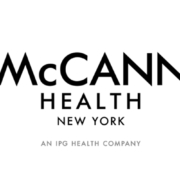How to build in hyper-relevant market access messaging
How to build in hyper-relevant market access messaging
By Jon Bambalas
Healthcare professionals (HCPs) have several choices today when it comes to prescribing the right medication for patients. There are several factors that influence an HCP’s prescribing decisions, including understanding the drug’s clinical attributes, their professional experience with the drug, and knowing the drug’s market access environment. In a study completed by KRC Research, it was found that almost 50% of the HCP’s prescribing decisions were influenced by their understanding of the drugs coverage, cost, and associated support and savings programs. Additionally, in a study completed by the National Institutes of Health (NIH), it was found that 88% of clinicians changed a patient’s medication at least once due to insurance influenceIn the same study, HCPs reported that during 63% of office visits, HCPs had a conversation with patients where insurance was the topic. The fact is that HCPs and patients alike are interested in knowing if their pharmaceutical brand of choice is covered by their health insurance and what potential costs might be. So, what are pharmaceutical brands incorporating in their strategy to inform HCPs about the market access environment for their brand today? We decided to take a closer look to better understand how brands are working to address this important factor of the prescribing decision.
When it comes to market access pull-through, sharing simple formulary coverage information has been the traditional approach, likened to driving a fossil fuel dependent car in 2023. Today, integrating multiple data sources is the latest trend, driving more “punch” to pull-through messaging. This sophisticated approach is like putting your brand behind the wheel of a new Tesla Model Y. Simply put, it is where market access strategy and messaging is heading. Brands that have made the decision to integrate multiple data sources like formulary data, medical claims, transaction, co-pay, and restriction data (i.e., prior authorizations) have significantly advanced their market access pull-through messaging capabilities.
This exercise in integration allows for brands to deliver HCP-specific pull-through messages to their target doctors, allowing for more relevant information to be shared. The integration of these data sets gets away from sharing a geographic-based message about a healthcare plan that an HCP may not even see in their practice. It advances the messaging to promoting plan information that we know the HCP sees in their practice. To make it easy on the marketer and their IT/data departments, pharmaceutical companies are investing in products that automatically integrate the above-mentioned data sources and deploys HCP-specific messages across several marketing and sales channels.
Importance of building a surround-sound market access pull-through ecosystem
Traditionally, brand budgets have assigned minimal budget dollars during the brand planning process to market access pull-through efforts. Fast forward to the 2020s, and you’ll quickly realize that a shift is underway. Pharmaceutical brands are beginning to realize the importance of promoting their market access statuses on healthcare plans, as brand market research often suggests that there are coverage perception issues with their brand. Why is this happening? Often an HCP will run into requests for prior authorizations or a string of plan changes, which all add up to a bad prescribing experience for an uninformed HCP. In fact, brands today are often seen designating a strategic imperative to “improving perception of market access,” or “maximizing/optimizing market access pull-through.” One large pharmaceutical company with over $50 billion a year in sales commented recently that they pay upwards of $5 billion in rebates and discounts to healthcare plans a year. When they reviewed their brand pull-through strategies, they realized there were some serious misses in helping to pull through their market access investments.
Additionally, this year the Inflation Reduction Act (IRA) is expected to cause some upheaval in how the 50 top-selling pharmaceutical brands are covered in the Medicare Part D channel. While those brands are working to secure a favorable position on Medicare Advantage plans, it’s their competitors that will need to build a rock-solid plan to promote the fact that they are still covered on Medicare Part D (just not in a preferred position with enhanced benefits).
Marketing and sales trends in 2023
To address the brand-developed SWOT opportunities and strategic imperatives related to market access pull-through, brands are relying on brand or market access marketers to build out a complete pull-through ecosystem (think surround sound) that incorporates both personal and non-personal promotional (NPP) tactics. Research supports that well-orchestrated sales and marketing approaches inclusive of market access pull-through will yield significant impact on both prescription market share and volume. At a large pharmaceutical company, a recent respiratory launch product reported 4:1 return on investment (ROI) when a fully integrated market access pull-through product was available for sales reps to use during sales interactions along with a Veeva rep-triggered approved email. It was this powerful combination that allowed for the brand to deliver an additional $27 million in sales in 2021. In another analysis completed by a pharmaceutical company, one brand saw upwards of a 24% impact on market share with 150 HCPs, when HCPs received consistent, 2+ HCP-specific messages in multiple months (included personal and NPP tactics).
Personal marketing tactics
Sales representatives still remain one of the most influential weapons for a brand when it comes to influencing an HCP to prescribe their brand. Top grossing brands today are investing in products for sales representatives to use in order to accurately promote pull-through for their brand. For example, tools fully integrated into Veeva Engage (digital sales aid) and rep-triggered approved emails are by far the most popular solutions in the marketplace today. This allows for sales representatives to work from an environment they prefer to be in (Veeva), while also ensuring that the HCP keeps their eyes on the sales aid. Reps simply do not want to start in an outside application to share cost and coverage information. They want the solution to be fully integrated as supported by reviewing Veeva utilization data. Rep-triggered approved emails are popular as well. Pharmaceutical organizations have reported “open rates” to hover between the 35–42% range with HCPs, exceeding industry email benchmarks. Additionally, sales representatives are also creating personalized sell sheets or leave behinds with web-based print portals that are brand-specific. The product Access Genius is emerging in this space as a complete and fully integrated solution for automated, HCP-specific market access messaging.
Non-personal marketing tactics
In parallel, top pharmaceutical companies are relying on market access marketing (centers of excellence) to build and execute a non-personal promotional plan for market access support.
- Website: This includes incorporating HCP-specific health plan look-up information on HCPbrand.com websites. In a recent article, surveyed HCPs stated that they used the web 41% of the time to gain understanding of a pharmaceutical brand’s access on health plans and potential costs. Search adds for “savings cards” and “coverage” have both increased significantly during the recent pandemic time frame. Website health plan information should work off of an ability to geo-locate an HCP when they land on the page or provide an opportunity for the HCP to enter a NPI number. HCPs only want to digest relevant information.
- Social media: Brands are also building automated, HCP-specific messages in social media platforms such as Doximity (DoxFormulary) and Medscape. These messages are consistent with the same messages that sales reps deliver during sales interactions and reinforce the “next best message” for an HCP as it relates to pull-through. The messages are displayed through a banner ad and reflect what the HCP sees in their practice. One DoxFormulary campaign powered with Access Genius messaging was measured by IQVIA and was found to deliver a 25:1 ROI along with a 14% increase in NRx volume.
- Print and direct mail: Print is still alive! Based on recent utilization data reviewed by PRECISIONxtract, Inc., sales representatives and marketers alike still see strong ROI with print leave behinds. In particular, allowing sales reps to have the ability to print from home yields strong results. Sales reps today know their HCPs well and can create a marketing piece for leave behind based on recent conversations they have had with the HCP. One brand saw sales reps printing as much as 9,000 leave behinds a month! Marketers also continue to launch direct mail campaigns to target HCPs as part of the surround sound they are using to advance the correct perception of their brand’s market access. These print solutions are great for allowing HCPs to utilize a quick reference when looking for a specific plan.
- Voice: Virtual assistants, artificial intelligence, and “voice” are one the fastest growing categories in tech today. Pharmaceutical companies continue to look for innovative ways to use this technology. Access Genius Voice is a new product in the market that just exited beta. The objective of the solution is to allow sales reps to ask Siri- and Alexa-like assistants about specific opportunities with HCPs as it relates to healthcare plans, competitors, etc. In beta mode, sales reps reported value in the solution, as they could ask questions about a target HCP before a sales call or while driving between accounts. Sales reps could also inquire about coverage on specific plans and what the top plans are for a specific target HCP. It’s another way to provide guidance to sales teams on where there focus needs to be.
- Sales representative nudges: Being able to “nudge” a sales rep with a specific call to action for an HCP is another opportunity to help solidify a brand’s ecosystem with strong pull-through. Integrating HCP-specific direction for sales reps is another way to highlight major plan changes. For example, utilizing a product like Veeva Suggestions to present a plan win message at the HCP level will help to reinforce the importance of the plan win. Additionally, it will help sales reps focus on the correct HCPs in pulling through the plan win.
As pharmaceutical brands consider ways to continue to increase market share and drive demand for their product, they should take into consideration the heavy influence market access plays in the decision-making process. Brands should review their SWOT analysis, strategic imperatives, and ATU data to fully understand if the perception of their brand coverage is accurate with HCPs. Then, brand teams need to ask themselves if they are making the proper investments with regards to pull-through. They should reflect on whether or not they are equipping their sales teams with appropriate pull-through applications and review if they have made the right investment with NPP tactics. Most importantly, brands should make sure they are using all appropriate data sources available to them to help deliver relevant pull-through messaging to target HCPs. The days of using only “lives” information (formulary) and geographic-based data are over — brands cannot afford to be assumptive when in front of their HCPs. By building a complete plan centered around ROI-rich tactics and HCP-specific market access messages, brands should expect to yield the growth they are pursuing.
References
Meyers DS, Mishori R, McCann J, Delgado J, O’Malley AS, Fryer E. Primary care physicians’ perceptions of the effect of insurance status on clinical decision making. Ann Fam Med. 2006 Sep; 4(5): 399–402. doi: 10.1370/afm.574
The Bend Bulletin. 5/16/2013 Updated 2/4/2020: Prescription costs a common concern among Part D enrollees. Conducted by KRC Research on behalf of Walgreens).
 |
Jon Bambalas is the senior vice president of business development & client management at PRECISIONxtract. He has 20 years of pharma industry experience including sales, sales training, sales leadership, brand management & strategy, multi-channel marketing, digital marketing, and market access marketing experience. In his current role, Jon oversees business development for the Customer Engagement Solutions Team. Jon has a wealth of experience working across various therapeutic areas including gastroenterology, neuroscience, diabetes, rheumatology, cardiovascular and obesity (general medicine, specialty & oncology). Prior to joining Precision, Jon worked at Takeda Pharmaceuticals for almost 20 years in sales and marketing leadership roles. In his last role, Jon led a multi-channel marketing team in which he led HCP and Consumer digital strategies, built a portfolio wide market access pull-through strategy, and managed a $120M+ brand budget. Jon led various teams responsible for product launches in sales and training and was instrumental in developing Takeda’s Selling model. Jon attended North Central College in Naperville, IL, where he received a Bachelor of Arts in Marketing. |











